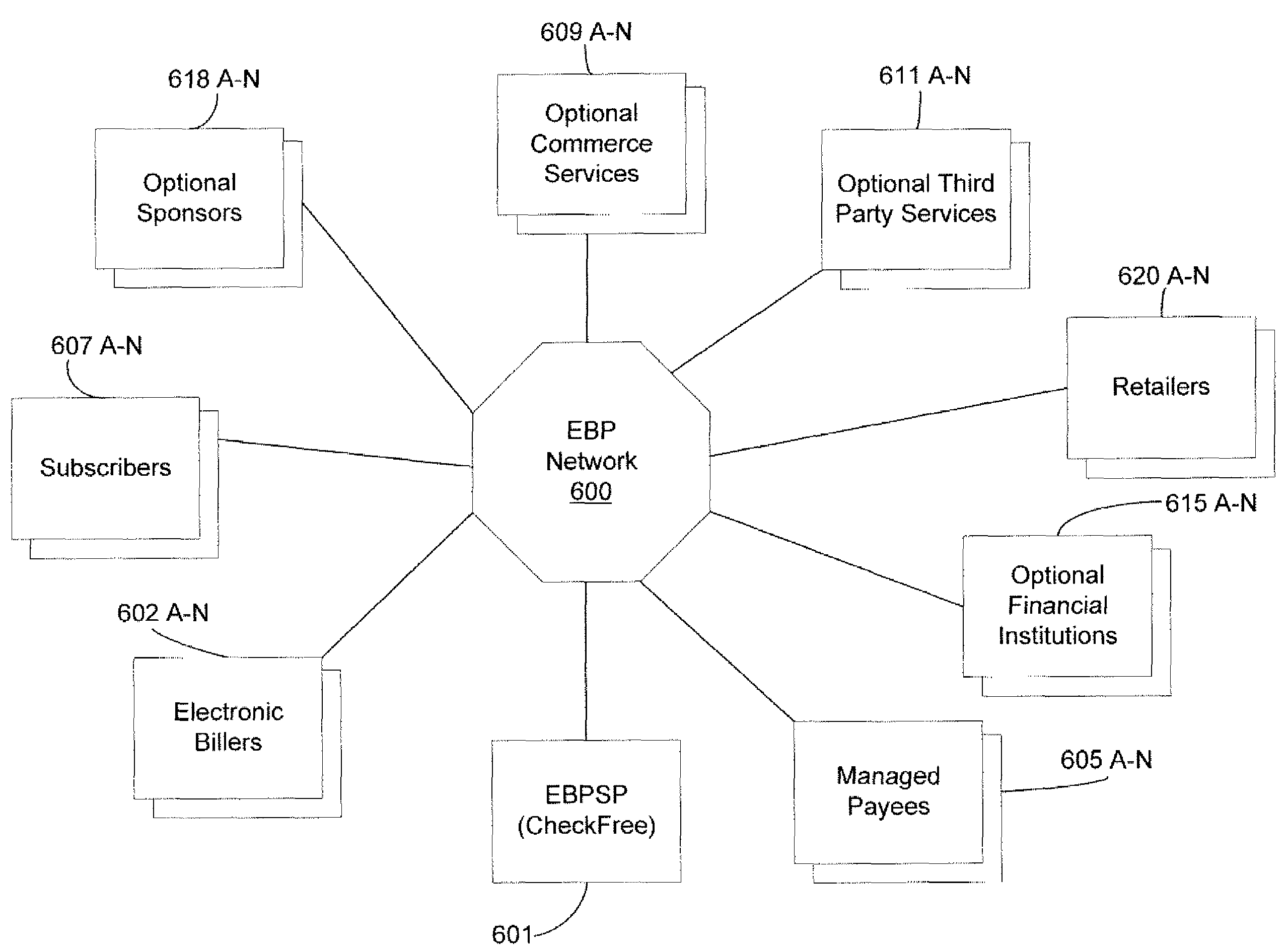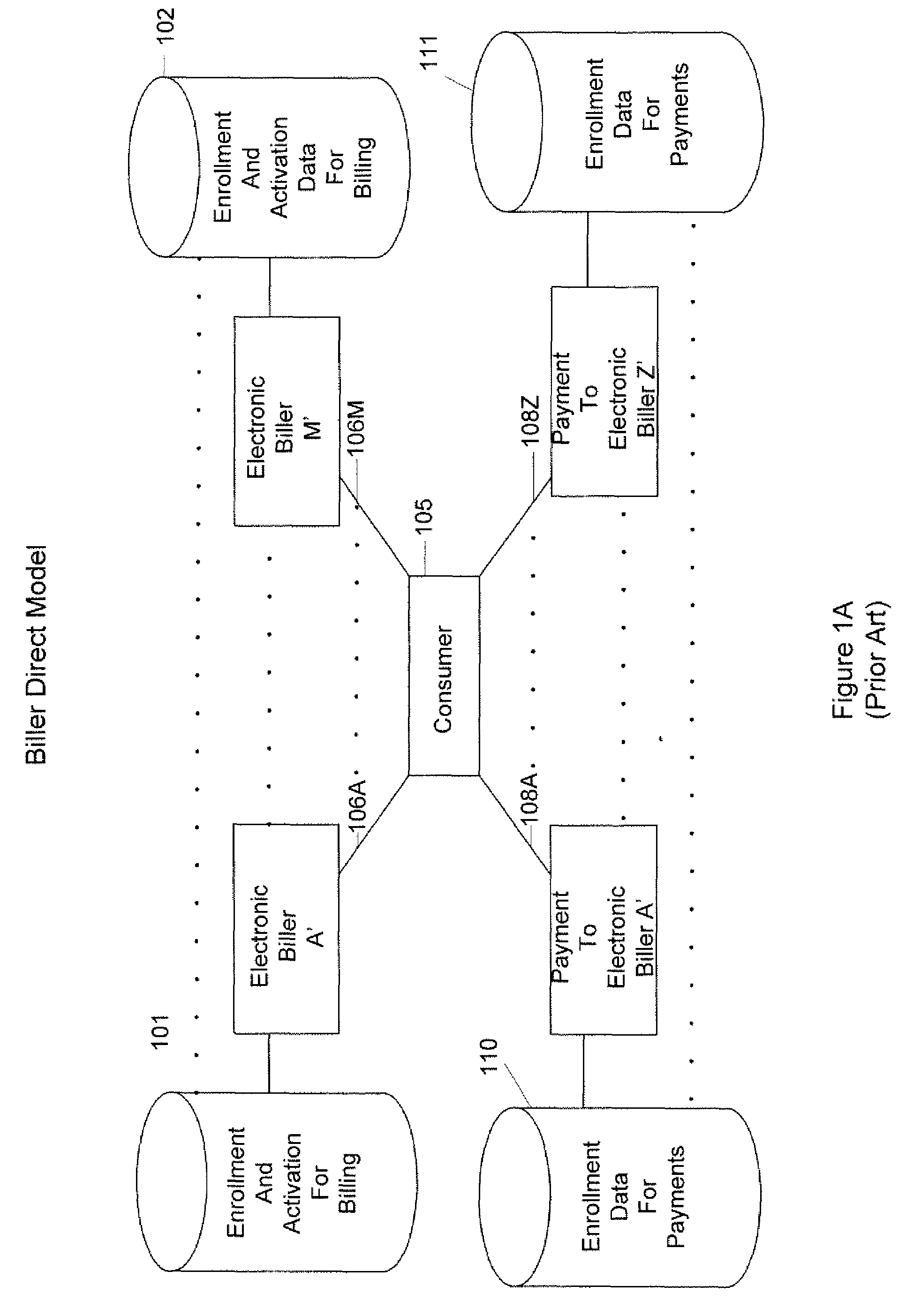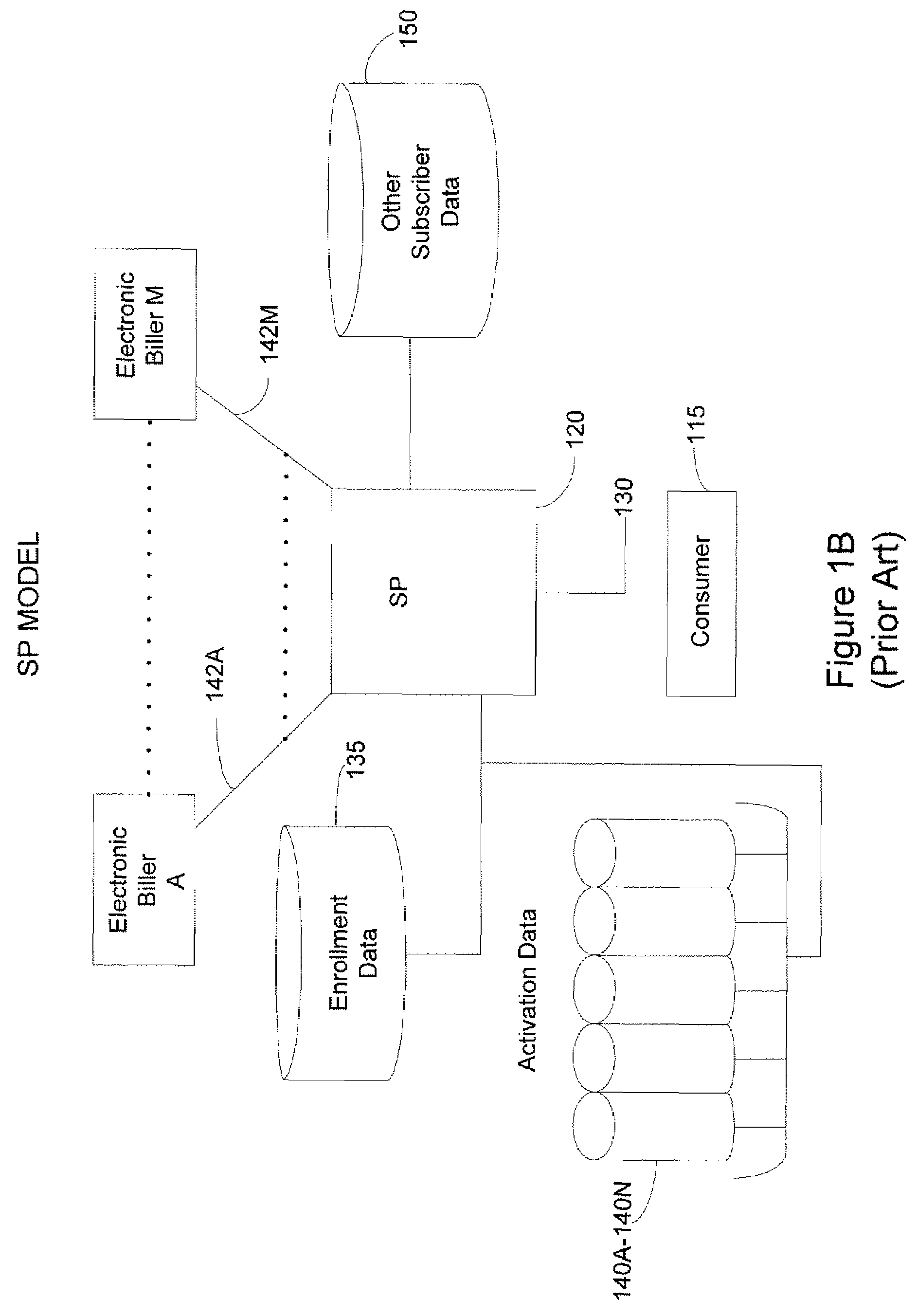Matching consumers with billers having bills available for electronic presentment
a technology for electronic presentment and bill payment, applied in billing/invoicing, instruments, data processing applications, etc., can solve the problems of increasing the number of both consumers and consumers making up the ebp consumer base and ebp transactions, and the existing ebp enrollment and activation process is very redundant, so as to achieve easy implementation and easy programming
- Summary
- Abstract
- Description
- Claims
- Application Information
AI Technical Summary
Benefits of technology
Problems solved by technology
Method used
Image
Examples
Embodiment Construction
[0141]FIG. 6 is a network diagram that shows a number of network entities participating in an electronic billing and payment (EBP) network 600 in accordance with the present invention. Communications between entities participating in the EBP network 600 can travel via the Internet, via one or more other networks, or via both the Internet and one or more other networks.
[0142]As shown, the network 600 includes a central electronic billing and payment service provider (EBPSP) 601, such as CheckFree, or some other electronic billing and / or payment service provider. The EBPSP 601 provides electronic payment functionality, sometimes referred to as e-payments, and provides electronic billing functionality, commonly referred to as e-billing. The EBPSP 601 perhaps additionally provides other electronic commerce services.
[0143]The network 600 also includes one or more electronic billers 602A-N that can bill their customers electronically, by presenting e-bills to customers, either directly or...
PUM
 Login to View More
Login to View More Abstract
Description
Claims
Application Information
 Login to View More
Login to View More - R&D
- Intellectual Property
- Life Sciences
- Materials
- Tech Scout
- Unparalleled Data Quality
- Higher Quality Content
- 60% Fewer Hallucinations
Browse by: Latest US Patents, China's latest patents, Technical Efficacy Thesaurus, Application Domain, Technology Topic, Popular Technical Reports.
© 2025 PatSnap. All rights reserved.Legal|Privacy policy|Modern Slavery Act Transparency Statement|Sitemap|About US| Contact US: help@patsnap.com



